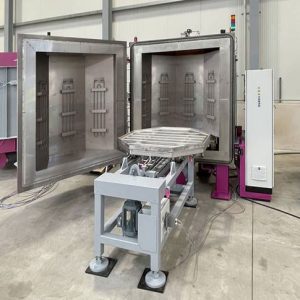
CINCINNATI, Ohio — December 16, 2021 — Cincinnati-based Michelman continues its preparation in advance of Dr. Richard I. “Rick” Michelman’s selection as the organization’s next president and CEO. Effective January 1, the following executive leadership changes will position the company for continued success and reinforce its commitment to its Triple Bottom Line of People, Planet, & Profit.
Dr. Rick Michelman, currently chief technology officer and executive vice president (EVP) Americas and Printing & Packaging, will become president and CEO. He has been with the company for more than 25 years, acquiring broad operation and market knowledge by serving in many organizational roles, including product development, technology management, business development, regional leadership, and business segment leadership. Furthermore, his background as a chemist gives him an understanding of the sustainable solutions Michelman continues to innovate globally.

Andrew Michelman, the company’s chief business development officer and EVP, Asia and Fibers & Composites, will assume additional leadership responsibility for Michelman’s Americas region and Coatings business segment. In his expanded role, he will oversee the commercial operations in Asia and the Americas and manage the strategic directions and operations of the Fibers & Composites and Coatings business segments. He joined Michelman in 2015 after accumulating over 20 years of global M&A experience. In addition, he has worked in investment banking with Citigroup in New York and London and as a strategy and corporate development consultant with European-based manufacturer Valliant Group.

Paul Griffith, Michelman’s chief marketing officer and EVP, EMEA and Agriculture, will add leadership of its Printing & Packaging business segment to his responsibilities. He takes over the business segment’s leadership from Dr. Rick Michelman as he transitions to president and CEO. Griffith will maintain his leadership over organization-wide Marketing, the EMEA region, and the Agriculture business segment. He came to Michelman in 2016 with almost 30 years’ career in the chemical industry, where he held senior and executive leadership positions at The Dow Chemical Company, ExxonMobil, and Jindal Films, including assignments in Europe, Asia, and the United States.

Jason Wise, appointed CFO in 2019, will assume the role of chief financial & risk officer responsible for the direction and operations of Michelman’s Finance, Accounting, Legal, Regulatory, and Environmental Health & Safety functions. Previous to joining Michelman in 2012, Mr. Wise held senior-level managerial and auditing positions at global, mid-to-large-sized market companies, including Baker Concrete Construction, Sun Chemical, Deloitte, and Arthur Anderson.

Kreg Keesee will remain as COO after being appointed in 2020. He joined Michelman in 2016 as chief supply chain officer and has since transitioned to chief administrative officer and then COO. He currently has leadership and management responsibility for Human Resources, Operations, Supply Chain, and Information Technology. Before joining Michelman, Keesee worked in finance at Procter & Gamble and held senior and executive leadership positions with Sun Chemical. At Sun Chemical, he had a series of posts with increasing responsibility, including vice president Global Supply Chain, Vice President – Global Business Transformation, and chief information officer and vice president – Sun Graphics Division.

Explained Steve Shifman, the company’s outgoing President and CEO: “These executive appointments provide leadership continuity and support the momentum we have for delivering on our purpose of Innovating a Sustainable Future. We have deployed exceptional talent to ensure that we continue to be more vital and impactful than ever before, as there is increased demand for our sustainable solutions in the coatings, printing & packaging, and fibers & composites markets.”
Shifman will transition to executive chair in 2022 after leading the company for nearly 20 years. During his tenure, Michelman has expanded its global footprint and significantly grown in size and profitability. As a result, more than 50 percent of its business is currently being generated outside of the United States.
“It’s an exciting time at Michelman,” Shifman added. “Our foundation is strong, and we are committed to building the business for generations to come.”
Posted December 21, 2021
Source: Michelman








